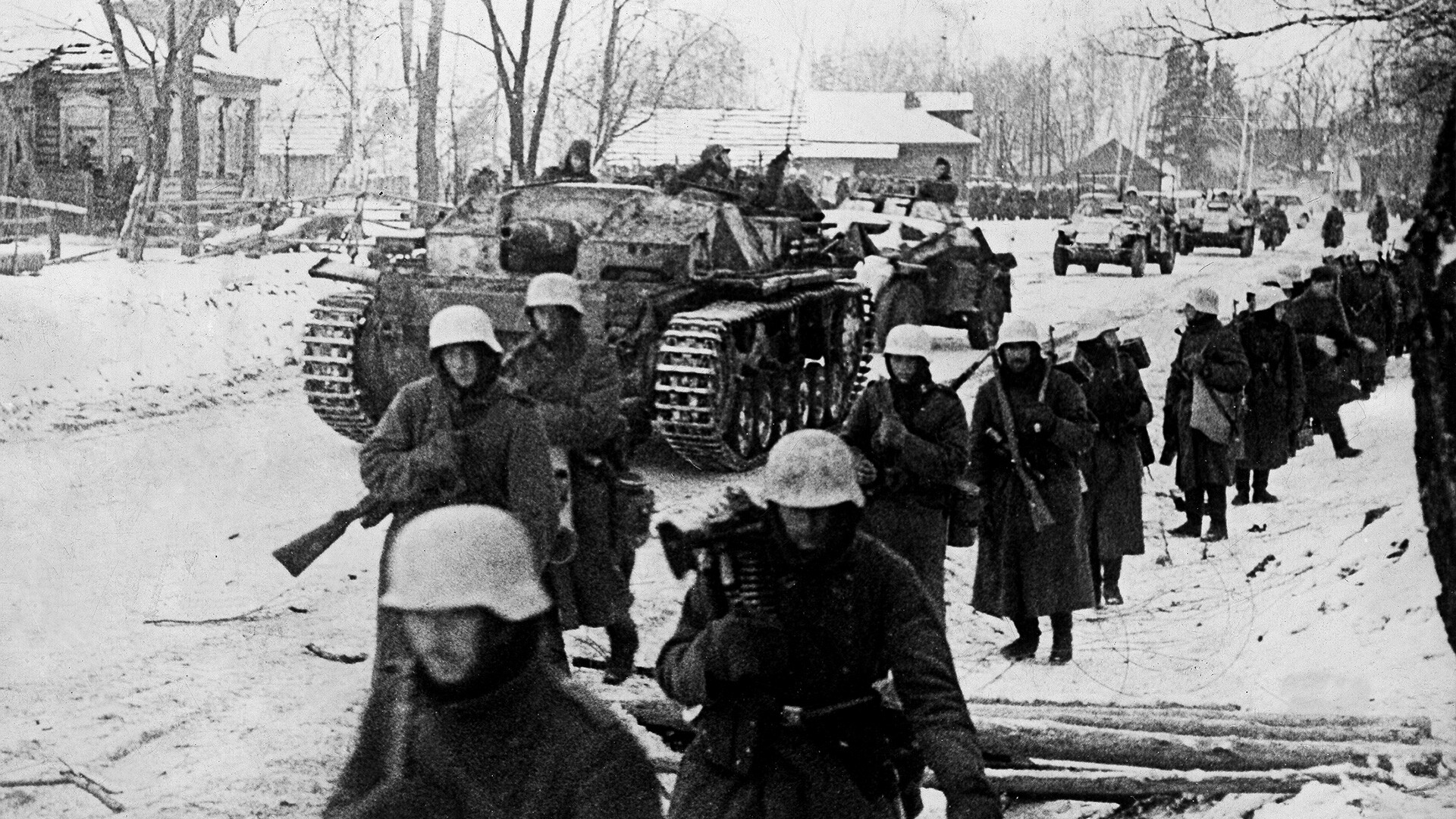
German units just ahead of Moscow.
Getty ImagesIn the Fall and Winter of 1941, Soviet troops stopped the Wehrmacht on the outskirts of the Soviet capital at the cost of tremendous efforts and huge sacrifices. The Nazis managed to come closest to the city only from the north-western direction.
On November 30, units of the 2nd Panzer Division of Lieutenant General Rudolf Fayel occupied the village of Krasnaya Polyana (today – a microdistrict of the town of Lobnya, Moscow Region). The distance to the administrative border of Moscow from there in a straight line was about 17 kilometers and to the Kremlin – a little more than 30.
The settlement was located on a hill and the Germans planned to place long-range artillery there to bombard the center of the Soviet capital. They had no doubt that the Red Army was on the brink of disaster and were preparing for a decisive assault.
"We stand near Moscow as victors and before our mental gaze in a blood-red glow arise burning city blocks, countless domes of cathedrals and the walls of the Kremlin! I wish it would come true sooner!" This was what, according to the memoirs of Colonel Luitpold Steidle, many German soldiers thought in those days.
However, such dreams were not destined to come true. On December 5, completely unexpected for the Nazis, Soviet troops launched a major counter-offensive and, three days later, liberated Krasnaya Polyana.
If using any of Russia Beyond's content, partly or in full, always provide an active hyperlink to the original material.
Subscribe
to our newsletter!
Get the week's best stories straight to your inbox